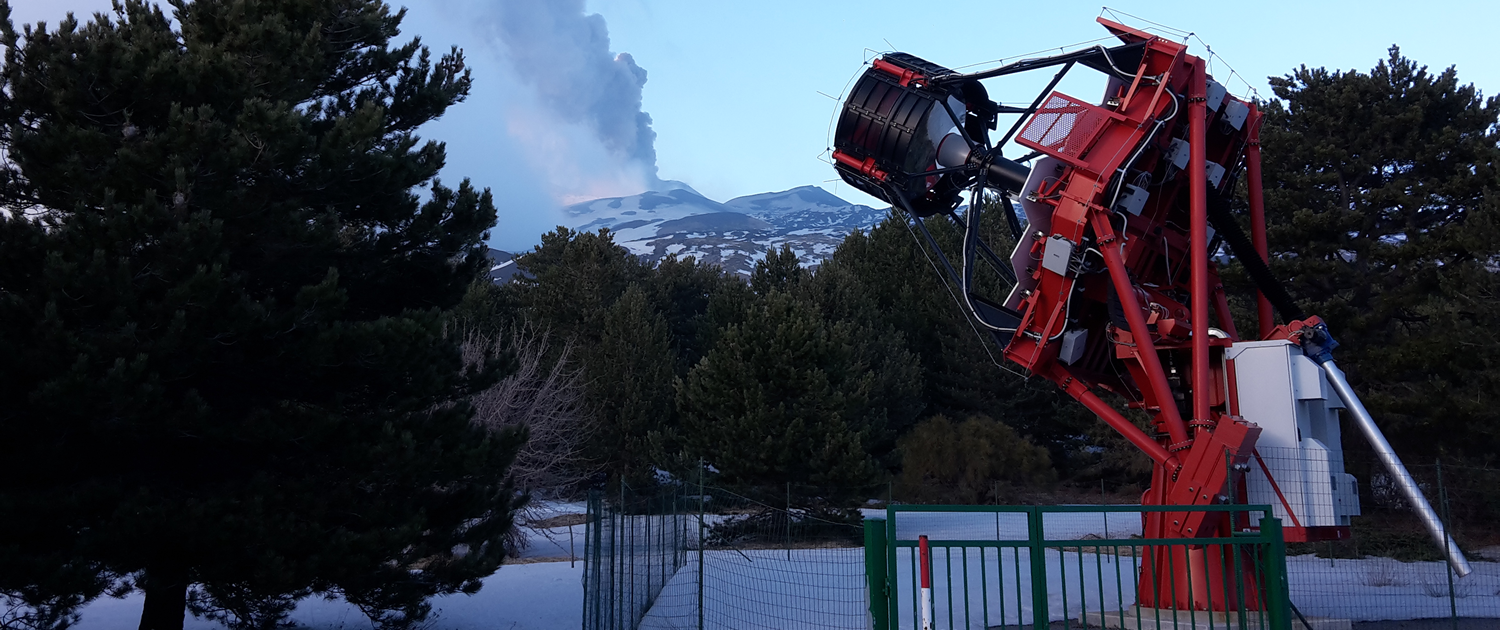How to observe a gamma photon from Earth.
The astrophysics branch that studies the celestial sources emitting photons at energies of a few tens of Giga-electronvolt (GeV) with telescopes from earth is quite young. Observing such sources is not simple. Gamma rays from cosmic sources interact with the atmosphere, producing cascades of particles.
These particles, traveling at a speed larger than the speed of light in the air (that is smaller than that in the empty space/vacuum) produce a bluish light cone, the Cherenkov light, with a very short duration, some nano-seconds, that is a thousand times faster than the minimum time distance measured to give pole position in Formula 1. The mirrors of the telescopes collect this very short flash and focus it on a series of ultra-fast detectors.
The crab
The first source observed and detected at these energies was the Crab Nebula in 1989. Since then some arrays of telescopes have investigated the sky at energies higher than 50 GeV and today about 200 sources have been detected, 40% belonging to our Galaxy, 40% of extra-galactic origin and 20% not yet identified.
The Cherenekov Telescope Array
The next step forward in the study of the sources at the highest energies is the realization of the Cherenkov Telescope Array (CTA). CTA will be the first ground-based gamma-ray observatory open to the world-wide astronomical and particle physics communities as a resource for data from unique, high-energy astronomical observations.
CTA will seek to address questions in and beyond astrophysics falling under three major themes:
- Theme 1: Understanding the Origin and Role of Relativistic Cosmic Particles
- Theme 2: Probing Extreme Environments
- Theme 3: Exploring Frontiers in Physics
There are several innovations introduced by CTA, among these the possibility to perform surveys that will combine excellent sensitivity, high resolving power, an excellent ability to detect transient phenomena and the possibility to go to energies up to 300 Tera -electronvolt (TeV). Therefore, there will be catalogs of sources that will be made public and which will allow population studies on different classes of objects and observations dedicated to other bands of the electromagnetic spectrum. Particular attention will be given to the new multi-messenger astrophysics, with the possibility to study the possible electro-magnetic counterparts of gravitational waves and neutrino emissions.
This post is also available in: Italian

